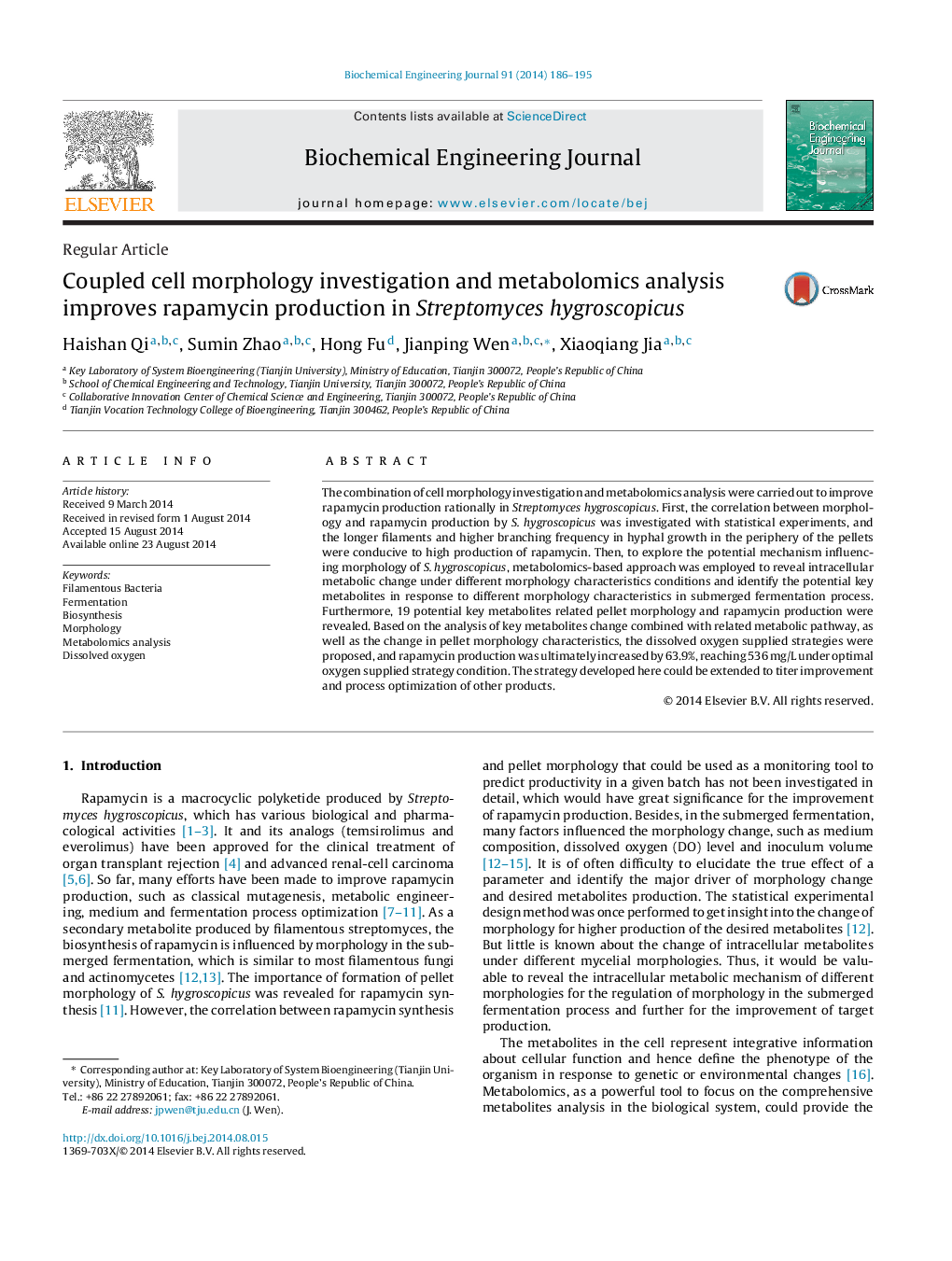| Article ID | Journal | Published Year | Pages | File Type |
|---|---|---|---|---|
| 3126 | Biochemical Engineering Journal | 2014 | 10 Pages |
•The correlation between pellet morphology and rapamycin production was explored.•Key metabolites were identified responsible for morphology characteristics.•Rational oxygen supply strategies were proposed for higher rapamycin production.•Rapamycin production was improved by 63.9%, reaching to 536 mg/L.
The combination of cell morphology investigation and metabolomics analysis were carried out to improve rapamycin production rationally in Streptomyces hygroscopicus. First, the correlation between morphology and rapamycin production by S. hygroscopicus was investigated with statistical experiments, and the longer filaments and higher branching frequency in hyphal growth in the periphery of the pellets were conducive to high production of rapamycin. Then, to explore the potential mechanism influencing morphology of S. hygroscopicus, metabolomics-based approach was employed to reveal intracellular metabolic change under different morphology characteristics conditions and identify the potential key metabolites in response to different morphology characteristics in submerged fermentation process. Furthermore, 19 potential key metabolites related pellet morphology and rapamycin production were revealed. Based on the analysis of key metabolites change combined with related metabolic pathway, as well as the change in pellet morphology characteristics, the dissolved oxygen supplied strategies were proposed, and rapamycin production was ultimately increased by 63.9%, reaching 536 mg/L under optimal oxygen supplied strategy condition. The strategy developed here could be extended to titer improvement and process optimization of other products.
